Papers by Victorino Mayoral Herrera
Trabajo presentado al International Mediterranean Survey Workshop, celebrado en Viena (Austria) d... more Trabajo presentado al International Mediterranean Survey Workshop, celebrado en Viena (Austria) del 2 al 3 de mayo de 2014.Peer reviewe
Trabajo presentado al International Mediterranean Survey Workshop, celebrado en Países Bajos el 3... more Trabajo presentado al International Mediterranean Survey Workshop, celebrado en Países Bajos el 3 de diciembre de 2011.Peer reviewe
Trabajo presentado al Seminario “Infraestructuras de Datos Espaciales (IDE) y Arqueología. Una vi... more Trabajo presentado al Seminario “Infraestructuras de Datos Espaciales (IDE) y Arqueología. Una visión desde el CSIC”, celebrado el 15 de diciembre de 2009.Peer reviewe
Resumen del trabajo presentado al VI Encuentro de Arqueología del Suroeste Peninsular, celebrado ... more Resumen del trabajo presentado al VI Encuentro de Arqueología del Suroeste Peninsular, celebrado en España en octubre de 2012.Peer reviewe
Resumen del trabajo presentado al International Mediterranean Survey Workshop, celebrado el 26 y ... more Resumen del trabajo presentado al International Mediterranean Survey Workshop, celebrado el 26 y 27 de abril de 2013 en Groningen.Peer reviewe
JOURNAL OF GREEK ARCHAEOLOGY, 2020
Author contribution: the idea for this article emerged from extensive discussions at the twiceyea... more Author contribution: the idea for this article emerged from extensive discussions at the twiceyearly International Mediterranean Survey Workshops. Bintliff and Attema took the lead in collecting the literature and drafting the text, using input from all other authors. Attema and Van Leusen drafted the recommendations. 1

This paper is intended to show the advantages of new techniques as Remote Sensing, Global Positio... more This paper is intended to show the advantages of new techniques as Remote Sensing, Global Positioning Systems and Geographic Information Systems on the design of research projects directed towards the aims of Landscape Archaeology. Centered on an area of contact among a variety of geographical environments, this project tries to recognise and understand the differences on settlement patterns on a diachronic perspective, employing the new technical implements and generating databases linked with archaeological prospection. The chosen area is organized along the corridor defined by the river Guadiana Menor, establishing a link between the coastal ports of south-eastern Spain with the important mining area of the upper Guadalquivir. The first stage of the analysis of settlement patterns should be guided to the detection of archaeological sites, as well as to determine the physical characteristics of the environment. Apart from other indispensable tasks, as the revision of the previous ...
Resumen del trabajo presentado al 19th Annual Meeting of the European Association of Archaeologis... more Resumen del trabajo presentado al 19th Annual Meeting of the European Association of Archaeologists, celebrado en Pilsen (Republica Checa) del 4 al 8 de septiembre de 2013.
Poster presentado a la Conferencia EuroGEOSS: "Advancing the Vision for GEOSS", celebra... more Poster presentado a la Conferencia EuroGEOSS: "Advancing the Vision for GEOSS", celebrada en Madrid (Espana) del 25 al 27 de enero de 2012.
En este trabajo se muestra una visión general de los conocimientos obtenidos sobre la morfología ... more En este trabajo se muestra una visión general de los conocimientos obtenidos sobre la morfología y el desarrollo histórico del paisaje urbano del yacimiento romano de Contributa Iulia Ugultunia (Medina de las Torres, Badajoz). A la investigación historiográfica y una actividad de excavación continuada podemos añadir la contribución de una batería de métodos no destructivos: la fotografía aérea, prospección geofísica y reconocimiento de superficie. En este artículo se realiza una revisión detallada de la información que estas técnicas combinadas pueden proporcionar para el conocimiento de la estructura espacial del sitio: delimitación del recinto amurallado, el diseño urbano, las zonas públicas o la actividad extramural.
Journal of Archaeological Science: Reports, 2020
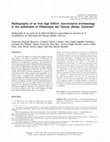
Trabajos de Prehistoria, 2019
El objetivo de este trabajo es proporcionar un primer avance del estudio del castro de Villasviej... more El objetivo de este trabajo es proporcionar un primer avance del estudio del castro de Villasviejas del Tamuja (Botija, provincia de Cáceres) a partir de la combinación de técnicas no destructivas. La posibilidad de cruzar los resultados obtenidos con diversos métodos geofísicos (magnetometría, georradar y tomografía eléctrica) plantea la oportunidad de formular un diagnóstico fiable sobre la organización espacial de este enclave.Se describen los resultados más relevantes, y se valora su aportación para una interpretación general de la estructura urbana y la morfología de los espacios domésticos. Esta información es contrastada con los datos de excavación previamente disponibles, y se analiza su encuadre dentro del conocimiento actualmente existente sobre este tipo de asentamientos. Asimismo, se añaden elementos de interés acerca de la evolución diacrónica del sitio, que son relevantes en relación con las hipótesis formuladas acerca del impacto de la conquista romana.En última insta...

Vi Encuentro De Arqueologia Del Suroeste Peninsular 2013 Isbn 978 84 616 6306 4 Pags 1389 1424, 2013
[ES]: El propósito de este trabajo es ofrecer una visión de síntesis sobre la labor que ha supues... more [ES]: El propósito de este trabajo es ofrecer una visión de síntesis sobre la labor que ha supuesto en los últimos años desde el Instituto de Arqueología la investigación sobre el fenómeno de los recintos ciclópeos de La Serena (Badajoz) y el impacto de la conquista romana en las formas de ordenación de los espacios agrarios del Suroeste peninsular. Se realiza una breve revisión de las claves de este problema histórico y de los antecedentes del trabajo presente. A continuación se exponen las diferentes líneas metodológicas desarrolladas, ofreciendo una síntesis de los conocimientos obtenidos. Finalmente se proponen algunos temas prioritarios para el desarrollo futuro de la investigación. [EN]: The aim of this paper is to give an overview of the recent activity in the Merida Institute of Archaeology regarding the study of the so called “cyclopean enclosures” of the Serena Region (Badajoz) and the impact of the Roman conquest in the agrarian landscapes of the Peninsular South-West. We make a brief review of some clues of this historical process and provide some background to understand more recent research. We will show the methodological threads we have developed, and a concise account of their main results. Finally, we suggest some key issues for future research
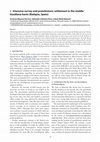
Although agriculturally marginal, the Guadiana river basin has been an axis of connection between... more Although agriculturally marginal, the Guadiana river basin has been an axis of connection between the Mediterranean and Atlanticshores of the Iberian peninsula. Nevertheless its archaeological landscape remains mostly hidden. Little effort has been put intoregional-scale survey in comparison to other peninsular regions. In this paper we show recent work carried out by the Institute of Archaeology of Merida in this direction. Intensive survey results from the area surrounding the archaeological site of Cancho Roano(Zalamea de la Serena, Badajoz) are analyzed. Our aim is to find a balance between flexible and quick recording methods, and thedetailed study of artefact distributions. A wide range of archaeological finds was detected, including very low density scatters. Prob-lems related to ground visibility in pastoral areas, site definition and dating of materials will be discussed. Finally we will considerinterpretation of the results in terms of land exploitation during Protohistoric an...

[ES]: La repeticion de determinadas practicas agrarias resulta en la conformacion de una huella m... more [ES]: La repeticion de determinadas practicas agrarias resulta en la conformacion de una huella material en la superficie del terreno susceptible de ser detectada con desigual facilidad. Su analisis puede llevarnos a la identificacion de patrones en las entidades arqueologicas superficiales, lo que a su vez permite identificar las actividades llevadas a cabo en cada espacio. En este trabajo se plantea la documentacion de dichas pautas de uso del espacio y explotacion del medio, a traves de un diseno de prospeccionintensiva en el territorio sur de Medellin. Se destaca el hecho de que en esta clase de trabajos es imperativo tener en cuenta diversos factores que distorsionan nuestra comprension de la evidencia. En particular como la explotacion agricola intensiva a partir de los anos 50 del siglo XX ha determinado la morfologia del paisaje. Consecuentemente, un analisis de dichos condicionantes no debe ser obviado si nuestro objetivo es alcanzar una precisa caracterizacion de las practicas agrarias en un entorno. [EN]: The repetition of specific agrarian practices results in an interesting surface archaeological compound. The record of their features and patterns allow us to identify a great range of activities that have taken place within a particular space. However, the detection of these material entities properties is not always easy. Consequently, the main objective of the survey strategy carried out in the territory south of Medellin was to obtain a detailed documentation of those land-use patterns. Nevertheless, the surface archaeological surveys are always influenced by an important number of biasing factors. For instance, the agricultural exploitation has determined the nowadays landscape morphology. Thus, an analysis of those constraining elements cannot be overlooked if we want to reach an accurate record of the agrarian practices within a specific space.

Journal of Roman Archaeology, 2014
There has been an increasing amount of work characterizing Roman towns in the SW part of the Iber... more There has been an increasing amount of work characterizing Roman towns in the SW part of the Iberian peninsula 1 but excavation still remains the primary approach, with only limited implementation of non-destructive methods. Those methods, however, are opening a robust path for understanding large archaeological sites, 2 while also allowing an optimization of resources in planning research. Extensive survey is injecting a new energy into sites as cultural resources, and this benefits local and regional conditions which are in need of alternative development policies. The above considerations informed the design of a specific research program within the framework of the RITECA II Project (Red de Investigáción transfronteriza Extremadura-Centro-Alentejo, part of an EU-initiative for Spanish-Portuguese cooperation that encourages links between the technology and research centers of the two countries). The main point here is the potential of non-invasive archaeological methods to contribute to a global analysis of complex sites, 3 which eventually can become a foundation for reconstructing sites for both scholars and the general public. In the present case, previous work by the Institute of Archaeology at Mérida provided a suitable case for study: the Roman town of Contributa Iulia Ugultunia, in the present-day municipality of Medina de las Torres (Badajoz) (fig. 1). Archaeological work at "Los Cercos" and its identification as Contributa Iulia. Until recently, scholarship on the town of Contributa Iulia focused on its possible location and the lack of archaeological remains that could be clearly linked to it. The lack of material confirmation of its location focused most of the research on questions of toponomy and status. The Elder Pliny (NH 3.13-14) placed Contributa Ivlia in Baeturia Celtica, between the Baetis (Guadalquivir) and Anas (Guadiana) rivers, within the province of Baetica and the conventus of Hispalis (Seville). In 1634, Rodrigo Caro identified remains of the town in the village of Fuente de Cantos. 4 In 1845, a local scholar, J. A. Barrientos, began the first excavation in a place called "Los Cercos" in the municipality of Medina de las Torres. 5 1
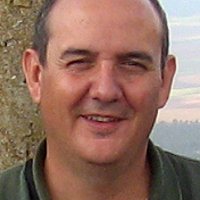

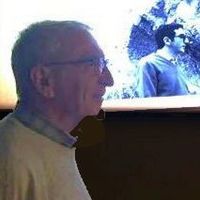
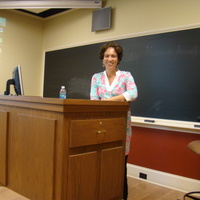
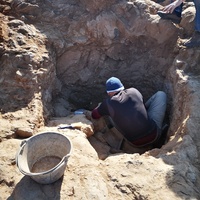

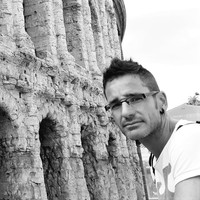

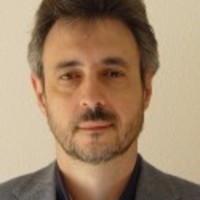


Uploads
Papers by Victorino Mayoral Herrera
Summary: In this paper we will deal with the description of the pedestrian survey strategies adopted during the surface archaeological record documentation in Medina de las Torres municipality (Badajoz, Spain). The performed fieldwork has followed two different. The first approach is based on an individualized list of the items geographical location. This system allows us to create a detailed model to depict the artifact densities variation within the examined spatial context. These works have been complemented by a second group of survey strategies, where the qualitative features of the surface compound are highlighted. In this case, the archaeological data is linked to a lineal or polygonal spatial entity. The combination of both strategies has resulted in a noteworthy material evidences body, whose potentialities are used to analyze the diachronic evolution of a landscape with undeniable agrarian qualities. Palabras clave: diseños de prospección pedestre, conjunto arqueológico de superficie, paisaje agrario, halo de los asentamientos.
In 2005 a (then) pioneering postgraduate course on the applicability of digital geospatial technologies for archaeology was launched in Spain. Quite unexpectedly, the course has been alive annually for more than 10 years so far, having trained around 300 young archaeologists from Spain, Portugal, and Latin America in the critical use of nowadays popular tools such as GIS, GPS, remote sensing and LiDAR for the documentation and analysis of the archaeological record.
To commemorate the first 10 years of the course, a conference was organized in Mérida (Spain) in October 2015. Former students were invited to present and discuss their research in which these technologies were used intensively; this edited book is a selection of those contributions. Through a series of widely varying case-studies, both technically sophisticated and theoretically informed applications of such digital technologies are presented.
All the contributors are young researchers, either young doctors or doctorate students, coming from fairly varied archaeological contexts and approaches.
En estas actas se recopilan las aportaciones de diferentes especialistas en el estudio de la romanización en la Península Ibérica. Los participantes de la reunión científica organizada por Victorino Mayoral y Sebastián Celestino tratan un amplio abanico de aspectos relacionados con las fortificaciones de este período y su incidencia en hábitat, paisaje y territorio, ya sea desde un acercamiento puntual, a través del estudio de un único yacimiento o de una reflexión más general.
We present this initiative, hoping it may be of your interest!
Os recordamos que el plazo de presentación de propuestas finalizará el 31 de marzo.
We remind you that deadline for submitting proposals will be March 31.
• Revitalize the role of territorial studies in Archeology
• Exchange experiences on recording methods (surface survey, geophysics, remote sensing, aerial archaeology, LIDAR, excavation…)
• Discuss about the role of current rural communities and the relevance of historical heritage for its identity and development.
Our proposal is a two days meeting to be held in Merida (Badajoz, Spain) from 29 to 30 may, 2017.
Offers of presentations are welcome – a title and abstract of no more than 1,000 characters should be sent to vmayoral@iam.csic.es
The scientific panel shall approve offers of presentations.
• Revitalize the role of territorial studies in Archeology
• Exchange experiences on recording methods (surface survey, geophysics, remote sensing, aerial archaeology, LIDAR, excavation…)
• Discuss about the role of current rural communities and the relevance of historical heritage for its identity and development.
Our proposal is a two days meeting to be held in Merida (Badajoz, Spain) from 29 to 30 may, 2017.
Offers of presentations are welcome – a title and abstract of no more than 1,000 characters should be sent to vmayoral@iam.csic.es
The scientific panel shall approve offers of presentations.
La potenciación en los últimos años de métodos de trabajo no invasivos ha multiplicado nuestra capacidad de ofrecer una lectura extensiva y en profundidad de la organización y transformación de los espacios agrarios del pasado. La entidad física de esta dimensión del paisaje es sin embargo difícil de aprehender. En primer lugar, porque el registro obtenido está muy focalizado en un tipo de información "efímera" (crop-marks, soil marks...) o cuya existencia es meramente digital (mediciones de sensores remotos). En segundo lugar, porque el estudio de la vida rural nos desplaza a escenarios cuyos actores son por lo general muy poco visibles a través de la evidencia material. El objetivo general de este workshop es potenciar la creación de un punto de encuentro para todos los interesados en la investigación sobre los espacios agrarios, estimulando la conexión entre áreas de conocimiento (Arqueología, Historia Agraria, Agricultura de precisión, agronomía, Estudios medioambientales…). De manera más específica, pretendemos con esta iniciativa:
• Revitalizar el papel de los estudios territoriales en Arqueología
• Intercambiar experiencias sobre los métodos de documentación
o Prospección superficial
o Geofísica
o Teledetección
o Arqueología aérea
o LIDAR
o Excavación de campos de cultivo y demás estructuras agrícolas...
• Reflexionar sobre el papel del medio rural actual y la relevancia del patrimonio histórico para su identidad y su desarrollo.
Formato: reunión científica o seminario.
Sede: Mérida, Instituto de Arqueología, 29-30 de mayo de 2017.
Se aceptan propuesta de presentaciones. Enviad un título y resumen de aproximadamente 1.000 caracteres a vmayoral@iam.csic.es
El panel científico aprobará las presentaciones que se adecuen a la temática del workshop.
Five sessions revolve around new insights from landscape archaeological projects, developments in the economy, the process of military expansion, processes of centralization and urbanization, and the ritual and religious sphere. A key goal of the conference is to discuss how the Portuguese panorama compares to other areas in the Iberian peninsula, and to foreground its contribution to current debates about Roman expansion and incorporation in the Central and Western Mediterranean.
With a view to assess the potential of integrating best practices in archaeological approaches and methodology, different national and disciplinary research traditions and historical frameworks will be explicitly discussed. As such, the conference aims to explore ways to collaborate more closely between various Mediterranean areas and research projects, and to develop a shared research agenda.
Grenzen überschreiten: Multidisziplinäre Forschungen zur römischen Agrarlandschaft im Südwesten Hispaniens